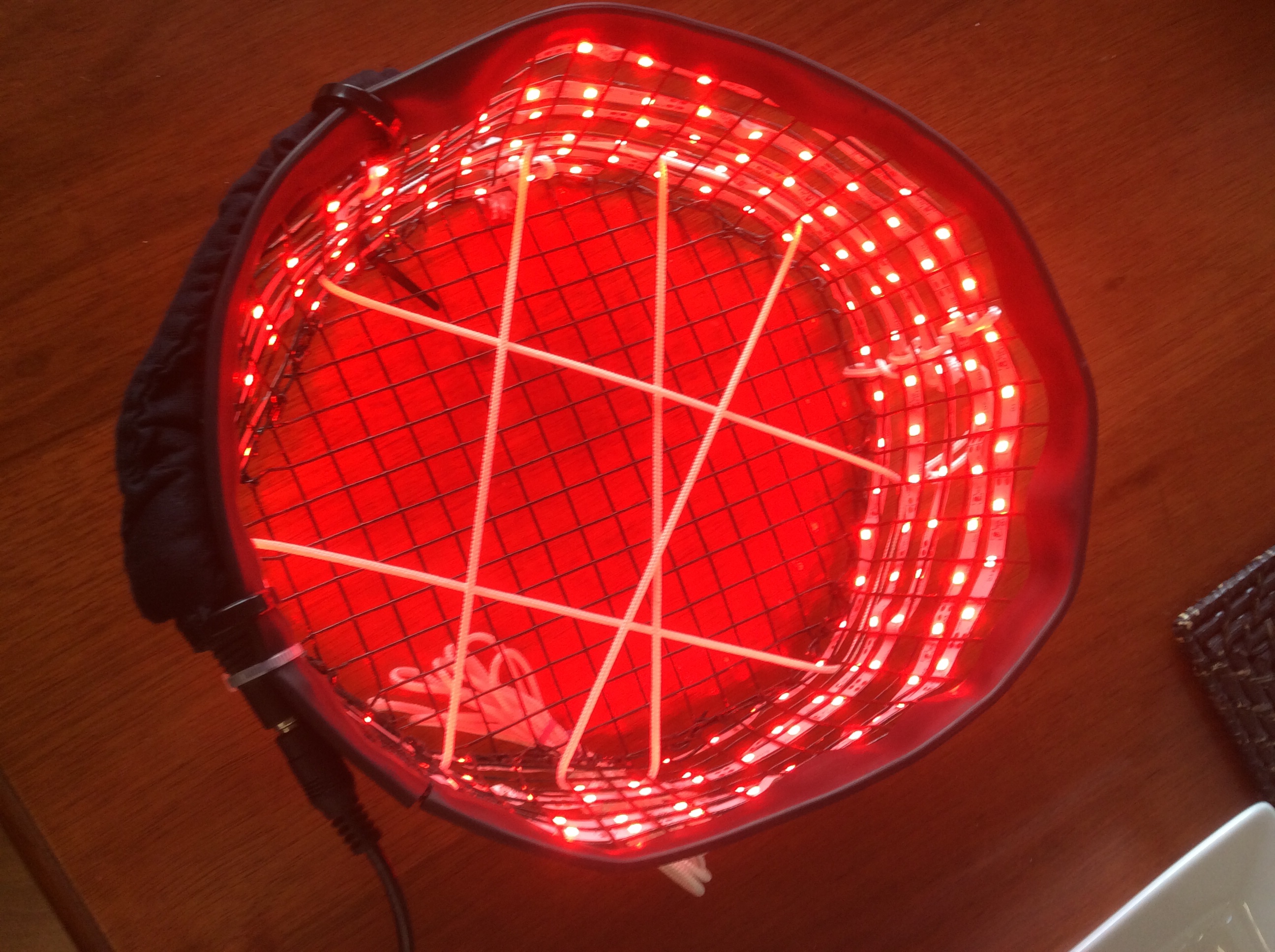LED strips are great for DIY projects, such as Cossack light hats, lights for helping arthritic fingers, a LED light wrap for back pain and so on.
Here’s a photo of a Cossack light device – you can see the LED strip winding around and around the frame.

LED strips should only be used for DIY projects.
You can make your own light hat using LED strips:
- Cossack instructions
- Cossack DIY movie
- Cossack photos
- Why I recommend making a Cossack rather than an Eliza bucket hat.
If you are thinking of buying a light device, make sure that it is made with individual LEDs, not a LED strip.
A device with individual LEDs is more likely to last, it will have better heat management, and it is more likely to be value for money.
As an example, a few weeks ago I made a LED strip device for my back. It uses standard gel-covered LED strip – the sewing is a bit weird but it was functional and felt pretty nice on my back after a day in the garden.
When I first made it, all three LED strips worked very happily. But as of yesterday, one of the LED strips decided to stop working part-way along its length. LED strips do that – they just stop lighting up.

There’s not much I can do about the bung LED strip. I’ll continue to use my home-made device on my back for the moment, but if more of the LED strips decide to conk out, I’ll pull it apart and make another.
The lesson is clear, though.
If you are thinking of buying a commercial light device, avoid those made with LED strips.
